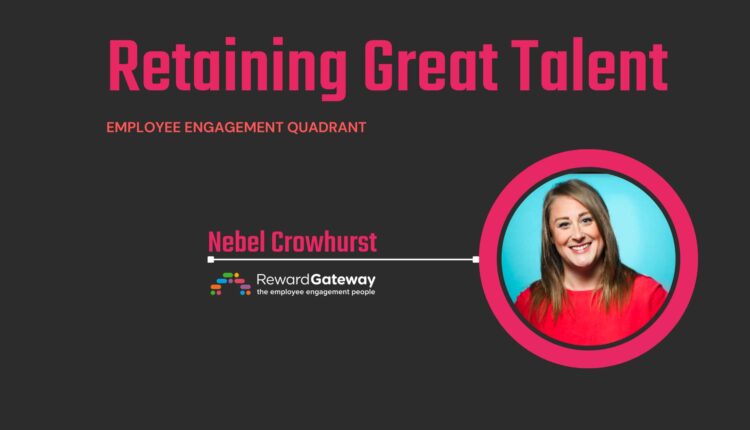Amid rising living costs and economic uncertainty, employers are facing widespread levels of employee burnout and stress within the workplace. Reward Gateway’s latest research shows that more than half of employees experience frequent stress at work, and more than four in five say that burnout has a negative impact on their overall wellbeing. Building and maintaining a meaningful connection in a world of remote and hybrid working can be an additional hurdle for employers trying to support employees dealing with burnout and stress.
Employers need to address this issue as soon as it presents itself as the longer it goes unresolved, the greater the impact. Consequences such as higher employee turnover and employees stepping away from important tasks becomes more prevalent, which in turn creates more work for other employees. This then can catalyze a burnout domino effect, leading to a significant productivity drop.
What is the Employee Engagement Quadrant?
At Reward Gateway, we use the Employee Engagement Quadrant as a framework to help leaders avoid losing great talent by identifying areas for development. Broadly, we’ve identified four different cohorts of employees based on discretionary effort and their intent to stay.
Read More: HR Tech RADAR 2023: Top HR Technology Companies You Should Follow
In the first quadrant are Detractors. These employees are characterized by low effort and low intent to stay and will challenge a decision before thinking about why it’s been made, undermine the efforts of themselves and others and spread negativity. In the second quadrant are Stayers. These workers have a high intent to stay but also exhibit low levels of discretionary effort. Though they can be reliable, they put in the bare minimum effort, can be resistant to change and rarely step outside their comfort zone.
In the third quadrant are Go-getters, characterized by high effort and low intent. Their high energy, high-quality work and motivation is a boost to teams but they don’t always look out for others and are ready to jump ship for better opportunities. Lastly, in the fourth quadrant, there are Ambassadors. With high effort and high intent to stay, these employees are driven, reliable high-performers who look out for the long-term good of the whole team.
Improving Engagement
The good news is employers have the ability to move employees between quadrants.
But different quadrants demand different approaches. For instance, give Detractors the opportunity to voice their negative opinions in a productive way and help them feel truly heard through regular, targeted pulse surveys, spaces for ongoing feedback and one-to-ones with effectively trained managers.
Improving effort levels among Stayers relies on rewarding them for behavior that stretches them and achieves success. Although 72% of UK employees, overall, agree their wellbeing would improve if they were simply thanked more for their hard work, a simple ‘thank you’ here won’t cut it. Personalized recognition schemes, that provide tangible rewards (such as e-gift cards or company-specific perks), not only motivate employees to push themselves but create a culture where innovation is celebrated and contributions are valued.
In fact, 58% of all UK employees want their employer to increase their investment in employee reward and recognition.
Such reward and recognition also helps organizations keep hold of their Go-Getters. By showing individual success in the context of wider company growth, Go-Getters see themselves as part of a bigger team, further supported through the amplification of recognition and company-wide communication building a shared community. Feed Go-Getters’ need for new opportunities, even with tight L&D budgets, by encouraging them to take on new special projects.
Finally, remember that Ambassadors can also move quadrants and so must equally be encouraged. Rewarding and recognizing their hard work is crucial but managers should also look to involve them in strategic business conversations, to further empower them and allow their high-quality work and positive attitude to fuel company growth.
If organizations want to win and retain high-performers, dissipate negativity, increase motivation and, ultimately, drive success, they must get serious about understanding and catering to their employees’ individual engagement needs. This will help you build a stronger team that can take on the challenges of an unpredictable, changing work environment.
With continued economic uncertainty likely to bring more disruption and potential burnout to workforces worldwide, reward and recognition can serve as an affordable and effective lever to improve employee wellbeing and resilience.
Top Insights: Is Gamification the Missing Link in Higher Adoption of HR Technology & Tools?

